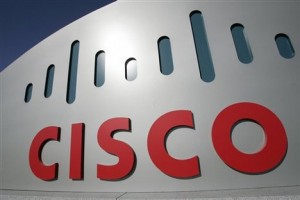 Cisco Systems wants to make it easier for mobile operators to scale up the wired networks that their wireless systems feed into, and yesterday it introduced a mobile aggregation switch with 10 times the capacity of its current product.
Cisco Systems wants to make it easier for mobile operators to scale up the wired networks that their wireless systems feed into, and yesterday it introduced a mobile aggregation switch with 10 times the capacity of its current product.
Less than a week after releasing its latest study on global IP (Internet Protocol) traffic, which forecast an 18x increase in mobile data traffic between 2011 and 2016, Cisco is rolling out a more high-powered switch, the ASR 5500, to transport and process that data. It follows the ASR 5000, which was introduced in 2010 and is based on an earlier product from Starent, which Cisco acquired in October 2009.
Cisco calls the new switch a terabit-speed platform and the ASR 5000 a gigabit-scale system, referring to their total system throughput. It won’t give any more details, saying overall throughput will vary.
But the underlying software platform, which remains consistent between the two systems, is the key to Cisco’s strategy. It combines standard data transport with high-level functions for matching mobile performance to devices, applications, network types, policies and other factors. With those capabilities, Cisco expects to help carriers save money and effort when they need to respond to ever-increasing volumes of mobile data traversing their networks.
Cisco’s approach saves carriers from having to buy separate boxes or hardware modules for each process, according to Murali Nemani, senior director of mobility solutions marketing. But beyond that, it lets the switch reuse the same processing power for both control-plane and data-plane tasks. The same switch capacity used for tasks such as policy management can be repurposed for simply moving data through the network, he said.
For example, in the morning, when mobile subscribers may be using multiple applications, many of those applications may be running in the background and polling the network for updates, creating chatty signaling traffic that requires a lot of processing. In the evening, those same users may shift to watching videos on their mobile devices, an activity that makes for heavy traffic but a relatively simple networking job, Nemani said. The ASR5500 can shift the same resources between those two tasks as the day goes on, he said.
The software platform is also prepared for the increasingly crucial task of handling subscribers’ mobile sessions as they move from 3G to 4G networks and from areas well served by traditional macro cells into sites with public Wi-Fi and smaller cellular base stations, Nemani said.
Some carriers aren’t ready to make fine distinctions among types of traffic, devices, networks and subscribers, said Yankee Group analyst Ken Rehbehn. But as subscribers and traffic grow, those steps will become critical for squeezing the most capacity out of their networks and spectrum, he said.
Likewise, the consolidation of many different functions in one box could save carriers capital and operational expense, but some service providers prefer to use equipment from different vendors, said analyst Peter Jarich of Current Analysis.
“Many will find it useful, some won’t,” Jarich said. For example, if a specialised supplier offers particularly good deep packet inspection, some carriers will buy a separate box for it.
The performance boost coming in the ASR 5500 is critical for Cisco, Yankee’s Rehbehn said. Though there are different ways to measure capacity, both Ericsson and Alcatel-Lucent claim to have terabit-class routers for mobile networks, he said. Cisco has to work a bit harder than those competitors to win mobile deals because it can’t bundle its equipment with radio access networks, according to Rehbehn.
“Closing the gap of performance is vital, and they’ve done that,” Rehbehn said.
Cisco says it will continue to sell the ASR 5000, which is suited to locations where there’s less need for capacity. The other systems in the ASR line, the 1000 and 9000, are more traditional routing platforms from Cisco’s heritage rather than Starent’s, and they continue to use different software. But Cisco’s Nemani said the company plans to extend the software in the 5000 and 5500 to a broader set of products.





